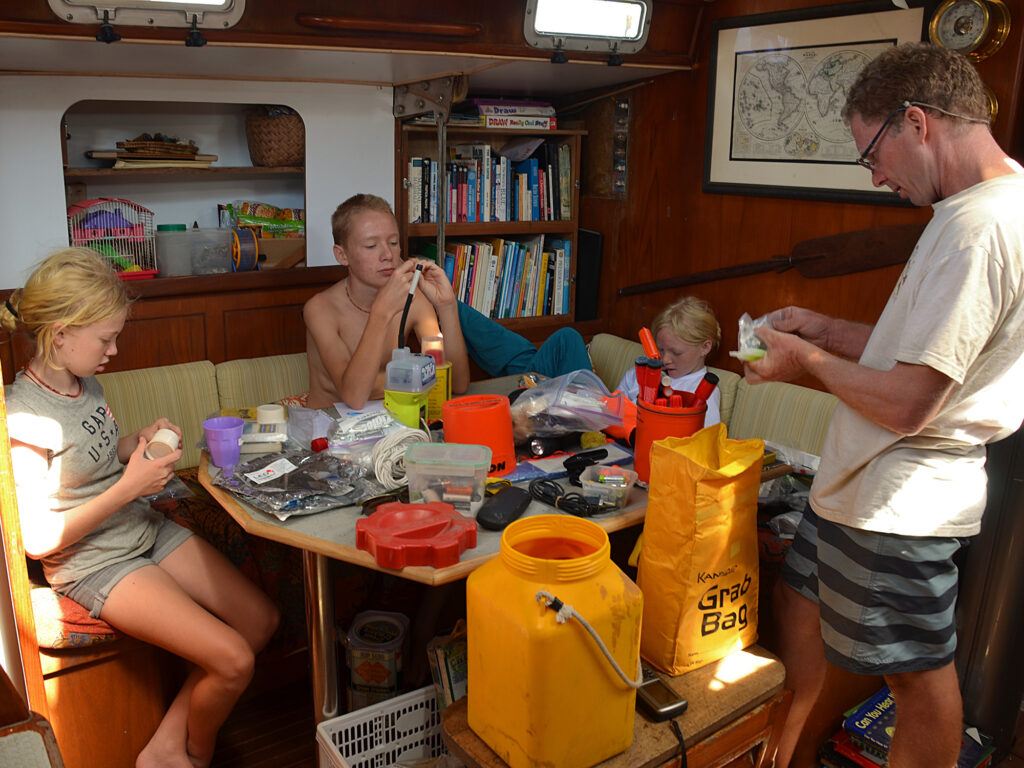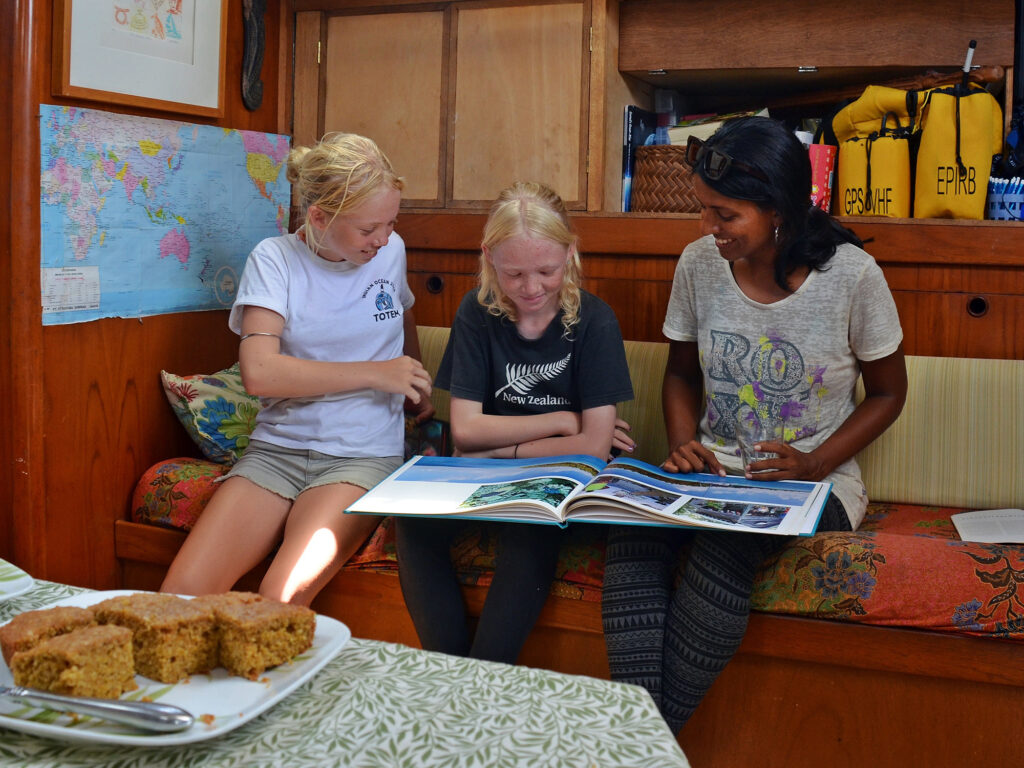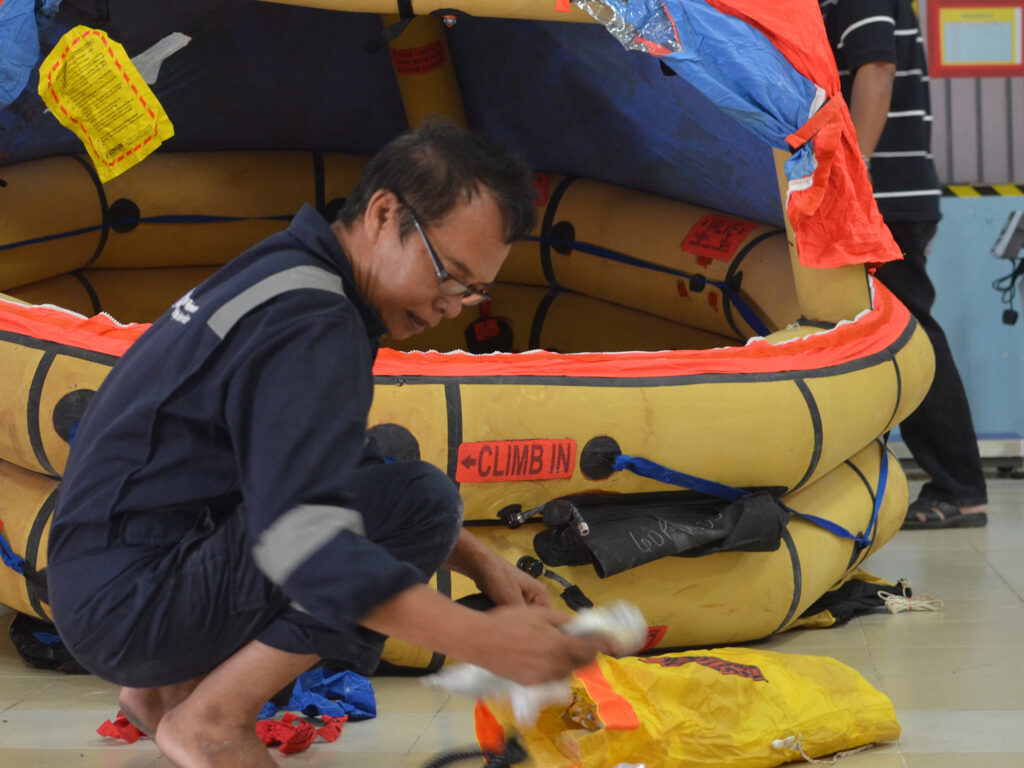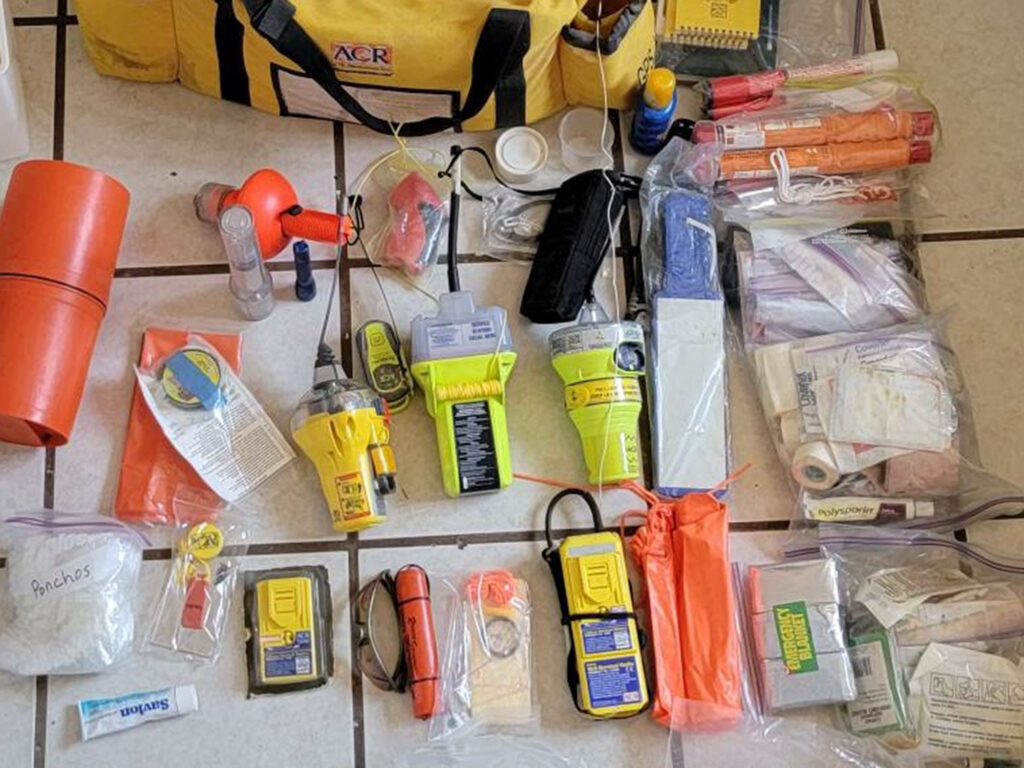
The conventional contents of a well-supplied ditch kit no longer make sense for most cruisers. As we prepared our 47-foot Stevens Totem for a new round of ocean passagemaking, we thought more critically about what belongs in our kit. It now looks very different from the kit we packed to sail south from Puget Sound in 2008.
The point of a ditch kit is to provide resources to survive if we must abandon ship. Necessary resources are contextual, of course. Are you 5 miles or 1,500 miles from the coast? What is the nearest rescue or aid-rendering resource? Is it hours away, or days?
Advice about what to put in a ditch kit abounds, but building the best kit for your particular boat and cruising plan is not so simple. There are big lists out there of all the things we might need (for example, Quantum’s recommended list, which includes 79 lines and far more items to pack) that stem from real examples in the living memory of our cruising community where a major event could mean weeks in a raft. Books have been published, such as Adrift: 76 Days at Sea, Steven Callahan’s recounting of his 1982 ordeal. But the world has changed. Trying to build a kit that contains everything is now a liability, not a saving grace.

Why? For two primary reasons: The time to abandon, and the time to rescue.
Regarding the time to abandon, imagine that you’re offshore when a serious event happens. Your boat is holed by debris. Or, it’s on fire. You have minimal time to launch a life raft. It’s night. The seas are rough. A crewmember is sick or injured. In this scenario, a weighty, overstuffed kit is less likely to make the transfer as you abandon ship—and if the kit’s not with you, it’s not a helpful resource. What’s better than having everything you might need is, instead, having the minimum resources required. A compact, lighter kit will be easier to grab and go, increasing the probability of the ditch kit making it into the raft with you.
Now, think about time to rescue. In the past, this amount of time in the life raft was routinely much longer than it is today. Your time between calling a mayday and being rescued is almost certainly going to be measured in hours, not weeks. Fishing gear and hand-pumped watermakers are not necessary to survive hours or even a couple of days in a life raft.
A friend with the U.S. Coast Guard confirmed for us that time to rescue is now startlingly short compared to what it was in past decades. Today’s sailors have better tech for signaling—EPIRBs, personal locator beacons, weatherproof and portable GPS and VHF radios. We also live in an era when rescue services are better coordinated, better equipped (think: heat-sensing cameras) and better at finding boats in distress. Starlink, even, has helped to effect faster retrieval, such as the recent case of the offshore sailboat Raindancer, which sank 15 minutes after colliding with a whale between the Galapagos and Marquesas islands. Quick coordination among cruising boats with Starlink meant the crew was picked up by other cruisers only 10 hours after abandoning ship.
One key to a rapid rescue time is being able to call a mayday with your location to people who can facilitate your rescue. After that, think about the minimum resources you will need while waiting for help.
Get your ditch kit gear here
For all these reasons, our ditch kit recommendations now start with an EPIRB that transmits via AIS. (See products from McMurdo and ACR. Some personal locator beacons also have AIS that can signal to help approaching rescuers find you. Have a waterproof VHF radio, ideally with digital selective calling and separately stored batteries. There also are dedicated, emergency VHF radios with long-life lithium batteries. A handheld GPS, also with batteries stored separately, is another good idea, as is a portable way to communicate offshore in weather, such as a Garmin inReach or an Iridium Go.
Next, add drinking water; weatherproof flashlights with separately stored batteries (a waterproof container for all these batteries is ideal, as is one for all the devices); and flares. Consider the traditional, pyrotechnic type as well as electronic flares.
Beyond that, think about context. Where are you cruising? If you’re in icy waters, you may have other essential requirements, such as survival suits.

Most life rafts come with some gear packed inside. Identify what yours contains, and adjust accordingly. In late in 2023, we purchased an offshore life raft. Inside were a range of items we didn’t need, such as a signaling mirror and seasickness medication.
Our new ditch kit is about one-third the size of the kit we had when we circumnavigated on Totem. The smaller bag is much lighter and easier to carry—and we have secondary ditch kits that we can also try to bring in an emergency, but that are not essential. These secondary kits include a jerry can with fresh water that will float if thrown overboard, and that can be secured to the raft with a tether; basic first aid supplies for burns, cuts and contusions; laminated copies of personal identification documents; dense sources of nutrition, such as granola bars and peanut butter; and low-weight, low-bulk space blankets.

This approach to making modern primary and secondary ditch kits is far better than our old kit, which I could barely even lift—and which ultimately was so heavy, it could have sunk. It also was hard to keep track of all the contents that need periodic review, such as batteries for expiration dates.
We are far from the only experienced cruisers now advocating for a different ditch-kit approach. Capt. Eugenie Russell, whose J/120 was holed by a whale while racing from Southern California to Ensenada, Mexico, has talked about how that boat’s ditch kit drifted away and sank, instead of making it to the raft. But the EPIRB had been set, and the crew had a handheld VHF radio—which meant they spent only four hours in the life raft.
Russell now suggests having a VHF radio clipped to you. Maybe a waterproof case for a smartphone and passport clipped to you too. Perhaps a backpack-style ditch bag to keep your hands free in an emergency.
Context really is everything, though. Don’t let anyone, including us, tell you what should be in your ditch kit. The world is rarely that simple, especially when you’re exploring it by boat.








